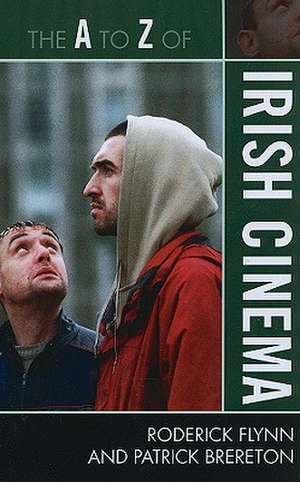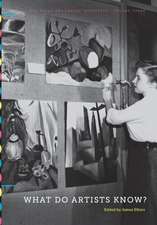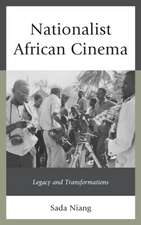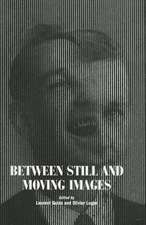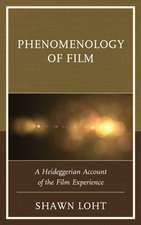The A to Z of Irish Cinema: The A to Z Guide Series
Autor Roderick Flynn, Patrick Breretonen Limba Engleză Paperback – apr 2010
Din seria The A to Z Guide Series
- 19%
 Preț: 432.95 lei
Preț: 432.95 lei -
 Preț: 375.12 lei
Preț: 375.12 lei -
 Preț: 373.53 lei
Preț: 373.53 lei -
 Preț: 456.31 lei
Preț: 456.31 lei -
 Preț: 452.49 lei
Preț: 452.49 lei -
 Preț: 456.14 lei
Preț: 456.14 lei -
 Preț: 456.31 lei
Preț: 456.31 lei -
 Preț: 468.83 lei
Preț: 468.83 lei -
 Preț: 461.14 lei
Preț: 461.14 lei -
 Preț: 455.37 lei
Preț: 455.37 lei -
 Preț: 454.40 lei
Preț: 454.40 lei -
 Preț: 463.26 lei
Preț: 463.26 lei -
 Preț: 456.14 lei
Preț: 456.14 lei -
 Preț: 463.05 lei
Preț: 463.05 lei -
 Preț: 429.96 lei
Preț: 429.96 lei -
 Preț: 457.58 lei
Preț: 457.58 lei -
 Preț: 460.17 lei
Preț: 460.17 lei -
 Preț: 479.43 lei
Preț: 479.43 lei -
 Preț: 433.40 lei
Preț: 433.40 lei -
 Preț: 462.08 lei
Preț: 462.08 lei -
 Preț: 451.69 lei
Preț: 451.69 lei -
 Preț: 429.17 lei
Preț: 429.17 lei -
 Preț: 443.79 lei
Preț: 443.79 lei -
 Preț: 449.47 lei
Preț: 449.47 lei -
 Preț: 460.17 lei
Preț: 460.17 lei -
 Preț: 452.10 lei
Preț: 452.10 lei -
 Preț: 457.29 lei
Preț: 457.29 lei -
 Preț: 451.51 lei
Preț: 451.51 lei -
 Preț: 458.26 lei
Preț: 458.26 lei -
 Preț: 424.75 lei
Preț: 424.75 lei -
 Preț: 476.54 lei
Preț: 476.54 lei -
 Preț: 460.17 lei
Preț: 460.17 lei -
 Preț: 447.65 lei
Preț: 447.65 lei -
 Preț: 459.19 lei
Preț: 459.19 lei -
 Preț: 448.63 lei
Preț: 448.63 lei -
 Preț: 464.96 lei
Preț: 464.96 lei -
 Preț: 452.87 lei
Preț: 452.87 lei -
 Preț: 412.80 lei
Preț: 412.80 lei -
 Preț: 463.05 lei
Preț: 463.05 lei -
 Preț: 452.49 lei
Preț: 452.49 lei -
 Preț: 458.26 lei
Preț: 458.26 lei -
 Preț: 466.91 lei
Preț: 466.91 lei -
 Preț: 456.31 lei
Preț: 456.31 lei -
 Preț: 459.41 lei
Preț: 459.41 lei -
 Preț: 452.49 lei
Preț: 452.49 lei -
 Preț: 460.17 lei
Preț: 460.17 lei -
 Preț: 438.80 lei
Preț: 438.80 lei -
 Preț: 441.29 lei
Preț: 441.29 lei -
 Preț: 431.49 lei
Preț: 431.49 lei -
 Preț: 450.54 lei
Preț: 450.54 lei
Preț: 458.26 lei
Nou
Puncte Express: 687
Preț estimativ în valută:
87.68€ • 91.56$ • 72.41£
87.68€ • 91.56$ • 72.41£
Carte tipărită la comandă
Livrare economică 15-29 aprilie
Preluare comenzi: 021 569.72.76
Specificații
ISBN-13: 9780810876132
ISBN-10: 0810876132
Pagini: 393
Dimensiuni: 137 x 213 x 25 mm
Greutate: 0.59 kg
Editura: Rowman & Littlefield
Seria The A to Z Guide Series
ISBN-10: 0810876132
Pagini: 393
Dimensiuni: 137 x 213 x 25 mm
Greutate: 0.59 kg
Editura: Rowman & Littlefield
Seria The A to Z Guide Series
Notă biografică
Descriere
The A to Z of Irish Cinema provides essential facts on the history of Irish cinema through a chronology; an introduction; a bibliography; and hundreds of cross-referenced dictionary entries on the pioneers and current leaders in the industry, the actors, directors, distributors, exhibitors, schools, arts centers, the government bodies and some of the legislation they passed, and the films.
